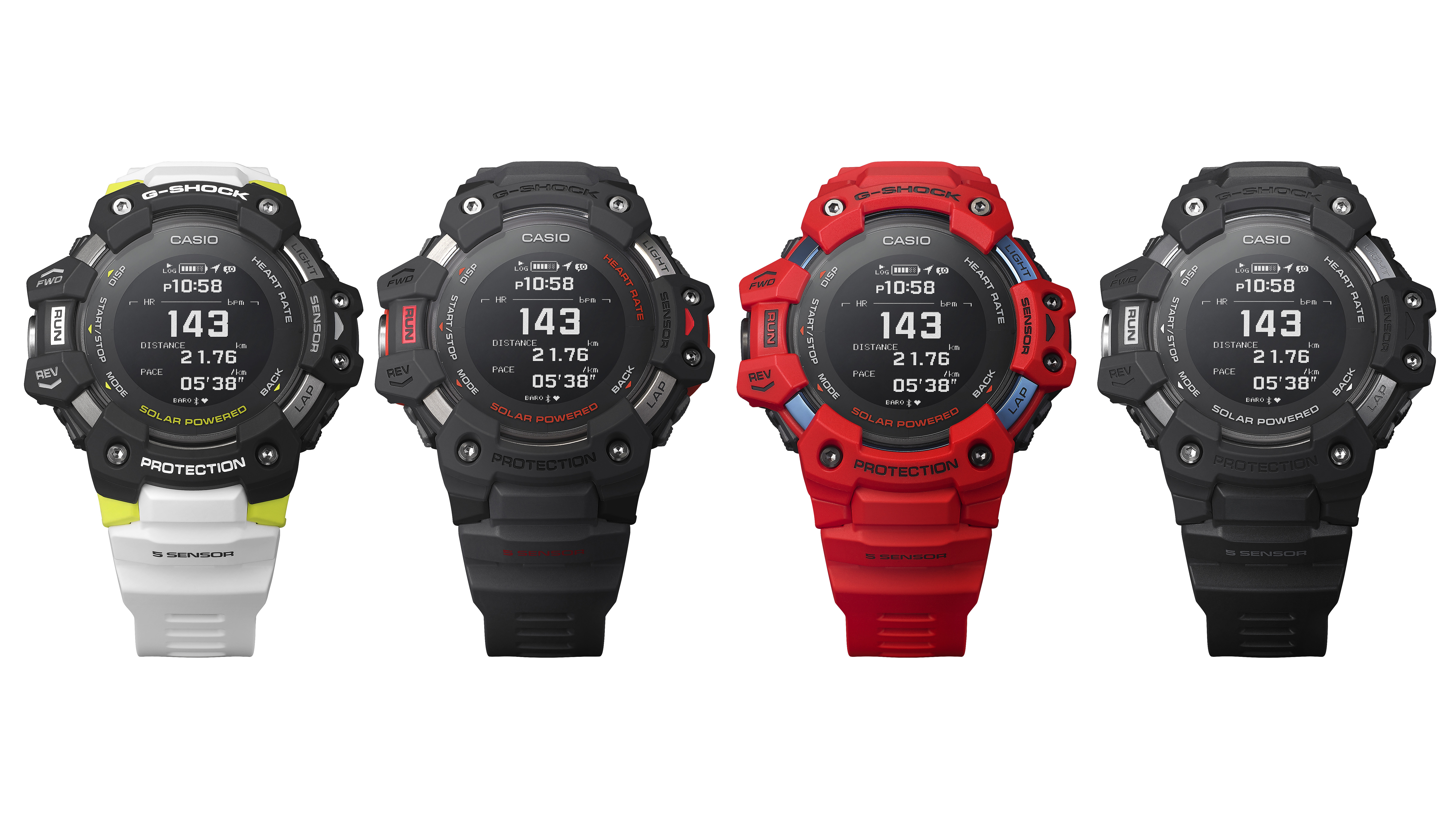Casio's new G-Shock GSQUAD fitness watch takes on Fitbit and Garmin
Killer features include built-in GPS, heart rate sensor, altimeter and barometer


Casio has just announced the newest model of the GSQUAD range, the Casio G-Shock GBD-H1000, enabled with all the sensors you'll ever need in a fitness watch, including an optical heart rate sensor, barometer and even GPS.
• BREAKING! Fitbit reveals brand-new Fitbit Sense and Fitbit Versa 3 smartwatches
With the GBD-H1000, Casio is seemingly after active people who favour traditional watch brands, and find the look of the Fitbit Versa 2 and the Garmin Venu a little too wimpy. The Casio G-Shock GBD-H1000 will sell for £379 per unit, £200 over the Fitbit Versa 2's usual retail price and on par with the Apple Watch Series 5, so we are expecting some pretty solid functionality for this price.
- Best watches for men
- Best fitness tracker: track steps, activity, sleep and cardio
- Best running watch: the best fitness watches for running, gym, workouts, cycling and more
The specification sheet, sent along with the press release, has a lot to say, but as much as it teases a many very promising features, some questions are left unanswered (e.g. display resolution). What we know is that the Casio G-Shock GBD-H1000 will be shock resistant, water-rated to 200 metres (!), will use GPS/GLONASS/QZSS for position tracking (no GALILEO, though) and will sport a range of other sensors, such as:
- Optical heart rate sensor
- Magnetic sensor (compass)
- Pressure sensor (air pressure/altitude)
- Thermo sensor for err...temperature
- And an acceleration sensor for counting steps
- How to watch the Marvel movies in order – completely free
- Magical Disney+ UK deal bags access for just £4.17 per month!
Casio G-Shock GBD-H1000: all the fitness metrics you need (more or less)
As well as all the above sensory trackers, the Casio G-Shock GBD-H1000 will also be able to give you a VO2 max estimate, evaluate training status and fitness level and measure training load as well as recovery time. It would be nice to know about which sports can actually be tracked by the Casio G-Shock GBD-H1000 and also app compatibility.
Of the latter, Casio had the following to say: "By connecting the watch with a dedicated app on a smartphone, the user can manage measurement data history such as calories burned and logged travel."
At the same time, the Casio G-Shock GBD-H1000 can store up to 100 runs in its training log, also up to 140 lap records per run and metrics like elapsed time, distance, pace, calories burned, heart rate, maximum heart rate, aerobic training effect, anaerobic training effect.
Get all the latest news, reviews, deals and buying guides on gorgeous tech, home and active products from the T3 experts
All this would not be needed for a pedometer so there is hope that at least some sport modes will be available pre-installed on the watch.

The Casio GBD-H1000 will be available in four colours, of which two look very similar
As for battery life, the Casio G-Shock GBD-H1000 can track 14 hours worth of exercising with the GPS on and will last in 'time mode' for about 12 months. The spec sheet also mentions a "solar-powered system (solar-charging system)", we are yet to find out what is that about.
The Casio G-Shock GBD-H1000 is a bit on the heavy side, it weighs approximately 110 grams, which is quite a lot for a running watch but should the fit be correct, it might not be an issue. Connectivity-wise, the Casio G-Shock GBD-H1000 uses Bluetooth (so no WiFi) and it will also come with a "high-definition, memory-in-pixel (MIP) high-contrast LCD display".
The new Casio G-Shock GBD-H1000 will be available online and in-stores from April 2020, RRP £379.
- Best Fitbit: which Fitbit fitness tracker or smartwatch is best for you?

Matt Kollat is a journalist and content creator who works for T3.com and its magazine counterpart as an Active Editor. His areas of expertise include wearables, drones, fitness equipment, nutrition and outdoor gear. He joined T3 in 2019. His byline appears in several publications, including Techradar and Fit&Well, and more. Matt also collaborated with other content creators (e.g. Garage Gym Reviews) and judged many awards, such as the European Specialist Sports Nutrition Alliance's ESSNawards. When he isn't working out, running or cycling, you'll find him roaming the countryside and trying out new podcasting and content creation equipment.